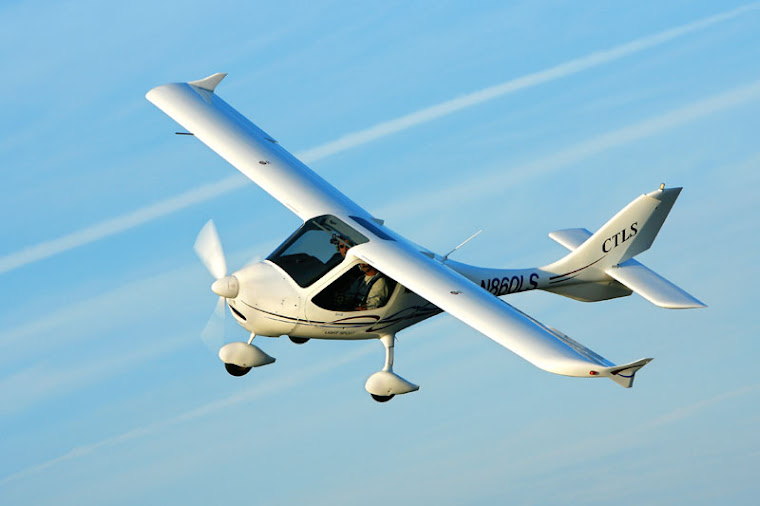Flight Training
The cost of obtaining your Sport Pilot license in an airplane SLSA will run anywhere from $3,500 to $4,500. In contrast, a Private Pilot's license will run anywhere from $8,500 to $9,500 or more. As you can see, the Sport Pilot license is much less expensive and more affordable for the average person who wants to learn to fly and join the Recreational Sport Flying revolution!
Pilot Gear
Sport Pilots will need at best the following pilot gear - headset, kneeboard, VFR sectional map, electronic flight computer, fuel tester, timer, wind meter and tire chocks. A headset is the most expensive item of all, and a good one will run around $200 to $300. All items in total should cost under $750 new.
Annual Operating Cost
Based on flying 120 hours a year (an average of 10 hours a month) in a rugged airplane SLSA (equipped with a 100-horsepower Rotax 912 ULS engine), the annual operating cost will run approximately $350 per month. Operating cost normally comprises engine cost (i.e. oil, overhaul reserve), fuel cost, inspection cost (an FAA requirement), and insurance cost.
To illustrate savings utilizing an airplane SLSA vs. a conventional piston single-engine airplane – a conventional piston single-engine powerplant will consume fuel at 9.5 gallons per hour vs. an SLSA piston single-engine powerplant (i.e. Rotax 912 ULS engine) at only 4 gallons per hour. This dramatic reduction in fuel consumption results in a significant savings for the Sport Pilot owner/operator.
Preventive Maintenance
SLSA must be maintained by a FAA certified mechanic. However, a Sport Pilot may perform some preventive maintenance on his or her aircraft – such as adding oil or cooling fluid, adding air to tires, and performing other minor maintenance. This helps to reduce overall costs.
Airplane SLSA Financing
The price tag for a new, standard equipped rugged airplane SLSA will run approximately $70,000 to $100,000, depending on the manufacturer. Standard equipped models typically include a portable GPS system for enhanced navigation and weather information. Financed over a 10-year period or 120 months, the monthly cost breaks down as follows:
1) Aircraft Price Tag = $70,000
15% Down = $10,500
85% Financed = $59,500
Interest Rate = 7%
Monthly Payment for a Sole Owner = $692
2) Aircraft Price Tag = $100,000
15% Down = $15,000
85% Financed = $85,000
Interest Rate = 7%
Monthly Payment for a Sole Owner = $987
Shared Ownership
When it comes to Recreational Sport Flying, shared ownership is the prudent way to go. Since most recreational powersports enthusiasts spend approximately 120 hours a year on recreational weekend bliss, it doesn't make sense to be the sole owner of an airplane SLSA. Instead, it makes perfect sense to own an SLSA under a shared ownership or partnership arrangement. When you divide the monthly financing cost by 4 shared owners and then add operating cost based on each owner flying 120 hours a year, the cost is much more affordable.
Each of 4 shared owners' out-of-pocket monthly cost would be as follows:
1) $692 + $350 = $1,042/mo. for a sole owner
vs.
$692/4 shared owners + $350 ea. = $523/mo. per each shared owner
2) $987 + $350 = $1,337/mo. for a sole owner
vs.
$987/4 shared owners + $350 ea. = $597/mo. per each owner
Each of the 4 shared owners would also pay 1/4 of the down payment or acquisition cost. And, of course, a longer financing term would further reduce one's overall monthly outlay.
As you can see, one should strongly consider shared ownership as the sensible choice!
Note: All estimates are based on general data derived from various online resources. The GetHookedOnFlying.com blog is not responsible for cost accuracy.


